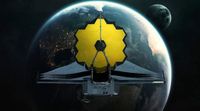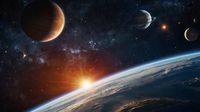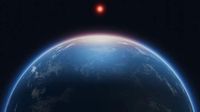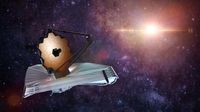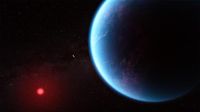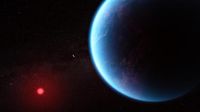Astronomers have unveiled promising evidence of potential life beyond our Solar System, focusing on the exoplanet K2-18b, located approximately 124 light-years away in the constellation Leo. Recent analyses conducted using the James Webb Space Telescope (JWST) have detected traces of dimethyl sulfide (DMS) and dimethyldisulfide (DMDS) in the planet's atmosphere. These compounds are primarily produced by marine microorganisms on Earth, suggesting the possibility of biological activity on K2-18b.
The discovery, described as a "major, breakthrough moment" by the research team from the University of Cambridge, indicates that K2-18b may possess a hydrogen-rich atmosphere and a vast ocean, making it a candidate for a "Hycean" world—an ocean-covered planet with conditions potentially suitable for life. Professor Nikku Madhusudhan, a leading figure in the study, emphasized that there is no known non-biological mechanism that could explain the presence of DMS and DMDS, stating, "Given all we know about this planet, the scenario that fits the data best is a world with an ocean pulsing with life."
K2-18b is about 2.6 times larger than Earth and has a mass approximately 8.6 times greater, placing it within the habitable zone of its star, where conditions may allow for liquid water to exist. Earlier observations had already indicated the presence of water vapor, methane, and carbon dioxide in its atmosphere, further supporting the notion that this distant world could harbor life.
The research findings were published on April 17, 2025, in the journal The Astrophysical Journal Letters. The team’s analysis of the atmospheric composition of K2-18b utilized advanced spectroscopic techniques to identify the chemical signatures of these compounds. The detection of DMS is particularly exciting, as it is predominantly produced by living organisms, primarily from marine phytoplankton.
However, the announcement has sparked a wave of skepticism within the scientific community. Critics, including Dr. Ian Whittaker from Nottingham Trent University, caution that while the presence of these chemicals is intriguing, it does not definitively indicate the existence of life. He noted that further research is essential to rule out abiotic sources, which could also account for the presence of these compounds.
Despite the skepticism, the Cambridge team asserts that the statistical significance of their findings is compelling, with only a 0.3% chance that the signal is a result of random chance. They argue that their data represents a strong line of evidence supporting the potential for life on K2-18b. Madhusudhan stated, "We treat this discovery as an independent line of evidence. We used a different instrument than in previous studies and a different wavelength range, which does not overlap with earlier observations."
As excitement builds around the possibility of extraterrestrial life, the research team is preparing for additional observations using the JWST’s Mid-Infrared Instrument (MIRI) to confirm their findings and further explore the atmospheric conditions of K2-18b. The potential implications of confirming life beyond Earth are profound, prompting scientists to consider a broader range of planetary types in their search for extraterrestrial life.
In light of these developments, astronomers are now contemplating the characteristics of Hycean planets, which may offer unique environments conducive to life. The findings from K2-18b may pave the way for future exploration of similar exoplanets, as researchers strive to understand the conditions that could support life in the universe.
Yet, the road ahead is fraught with challenges. While the presence of DMS and DMDS on K2-18b is a tantalizing prospect, scientists emphasize the need for caution. As noted by Laura Kreidberg from the Max Planck Institute for Astronomy, the detection of these compounds requires further validation to ascertain their origins. She remarked, "If DMS and DMDS truly exist in the atmosphere of this planet and are products of biological activity, it would be a groundbreaking moment in the search for extraterrestrial life."
As the scientific community grapples with these findings, the possibility of life on K2-18b raises fundamental questions about our place in the universe. The ongoing exploration of exoplanets and the search for biosignatures will continue to captivate scientists and the public alike, as each discovery brings us closer to answering the age-old question: are we alone in the cosmos?
